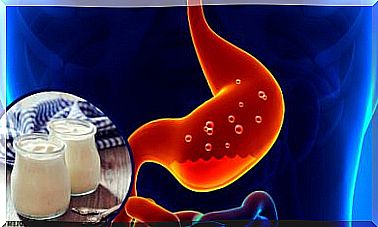Perinatal Asphyxia: Know Your Risk Factors
Neonatal asphyxia is a very serious problem that can kill the baby. Today we will discover why it occurs and what the risk factors are.

Perinatal asphyxia can occur before, during, or after delivery and for different reasons. The newborn suffers from a lack of oxygen that can lead, inexorably, to death.
According to data from a study, approximately 20% of children who suffer perinatal asphyxia die, and those who survive do so with permanent neurological problems.
There are numerous causes that can lead to problems in the newborn, including aspects before, during or after delivery. We tell you what the latest reviews say.
One of the leading causes of neonatal death

The World Health Organization (WHO) has included neonatal asphyxia among the leading causes of death for newborns. A position that makes us attach greater importance to this problem.
A baby suffocating before delivery may require an emergency cesarean section. If doctors notice this after the baby is born, the newborn will most likely not cry and move. A key feature is that your body appears lax.
In one situation as well as the other, doctors must act as quickly as possible. Constant monitoring and monitoring what may have caused the suffocation is essential to be able to find a solution and save the life of the baby.
Why does perinatal asphyxia arise?
Perinatal asphyxia can appear for different reasons. In addition, these will be different if they occur before delivery, during or after. Let’s see some of them.
Before delivery
This type of suffocation that occurs in unborn babies can occur in any month of pregnancy, although it is common to appear when the date of birth approaches.
That is why medical appointments are so important to check that everything is going well. Among the reasons would be the following :
- Anemia of the mother.
- Bleeding during pregnancy
- Improper position of the baby’s head.
- Prolongation of pregnancy (more than week 42).
- Maternal infection.
During the delivery
During labor there can be some dangerous situations for the baby’s life. Although doctors are prepared to deal with any circumstance, it is important to know what can happen.
- The umbilical cord surrounds the baby’s neck or is compressed at some point.
- Preeclampsia that causes a rise in the mother’s blood pressure.
- The mother suffers from a respiratory problem.
- Forceps are used.
- Labor takes longer than it should.
After delivery

Despite having already gone through childbirth, the risk of perinatal asphyxia is present if some of these situations occur.
- The baby is premature and his organs are still immature.
- Presents some type of congenital malformation.
- The baby has lung or heart disease.
- The newborn’s weight is far below normal.
Normally, when a baby suffers from mild suffocation, he may cry a lot, be irritable, and have slightly increased muscle tone. However, in general, this does not usually take more than a day.
On the other hand, if the situation is more serious, the newborn may convulse, not have the sucking reflex (so the mother is not able to breastfeed) and has a fairly low muscle tone.
Neurological damage
Depending on whether perinatal asphyxia has been resolved in time and whether or not it has caused seizures in the newborn, this can mark a before and after in the chances of the baby suffering some neurological damage.
However, this usually occurs when the suffocation situation lasts for a certain time or other factors are added. For example, the risk of suffering neurological damage is high if the baby has a failure in the cardiovascular and pulmonary system, for example.
Another reason that could increase the risk of suffering neurological damage is that the newborn has acidosis. This is when too much acid builds up in the blood.
Thanks to the controls carried out during pregnancy, perinatal asphyxia can be prevented. However, there are different circumstances that can be beyond any control.
However, having qualified delivery personnel who are familiar with these types of situations and who pay adequate attention to everything that happens is essential. Perinatal asphyxia can be fatal, so all precautions are little.








